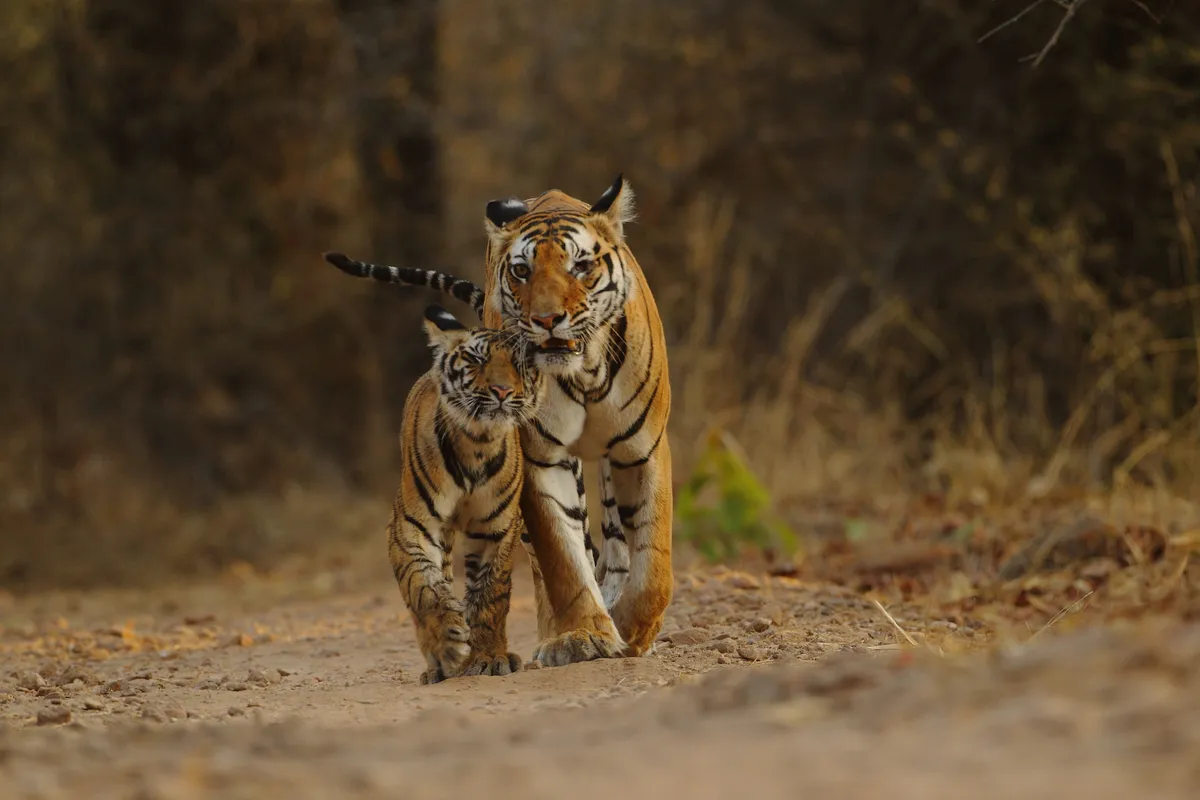The future of India’s most-iconic animal is looking more hopeful, as the latest tiger census (which takes place every four years) finds the population of wild Royal Bengal tigers has increased by more than 30 per cent in four years, and more than double that of India’s first tiger census, which took place in 2006.
Announcing the findings on Monday, Prime Minister Narendra Modi said: “The results of the just-declared tiger census would make every Indian, every nature lover, happy. “Nine long years ago, it was decided in St. Petersburg that the target of doubling the tiger population would be 2022. We in India completed this target four years early.”
The most recent census was able to make the most of technological advances — such as the use of an Android app — which has helped improve the accuracy of the count.
Though technology improved workflow, hard graft working in the field was necessary in order to gather the data. Forest rangers and scientists were needed on the ground, surveying a staggering 5,00,000km² of land on foot.
Overall, 31,81,000km² of forest were surveyed, making this an arduous and challenging project.
How was data collected for the census?
Gathering data involved a technique known as ‘double sampling’. The first phase of data collection took place on foot, analysing footprints, scat, and leftover pray. In the second phase, data and images were collected from the 26,383 camera traps that were placed in 141 locations across India.
By analysing both the raw data collected in the field, and information from the camera traps, the team were able to identify individual tigers.

A bright future for India’s tigers?
India is home to an estimated 70 per cent of the world’s wild tigers — a number that might increase if the current trend continues.
Though this can be viewed as a major conservation success, maintaining a healthy wild tiger population is still fraught with challenges.
Though illegal, poaching remains a threat, and was responsible for 123 tiger deaths between 2012 and 2017.
A larger number of tigers combined with a growing human population also increases the risk of the big cats coming into contact with humans more regularly.
This can be addressed with careful and considered conservation efforts, focused on improving tiger habitat and connectivity, as Born Free conservation projects officer Penny Banham explains: “Reducing human-tiger conflict, ending poaching, improving habitat quality and connectivity and increasing prey numbers across India and beyond will be vital in the success and perpetuity of tigers.”
Main photo © Aditya Singh/Getty.